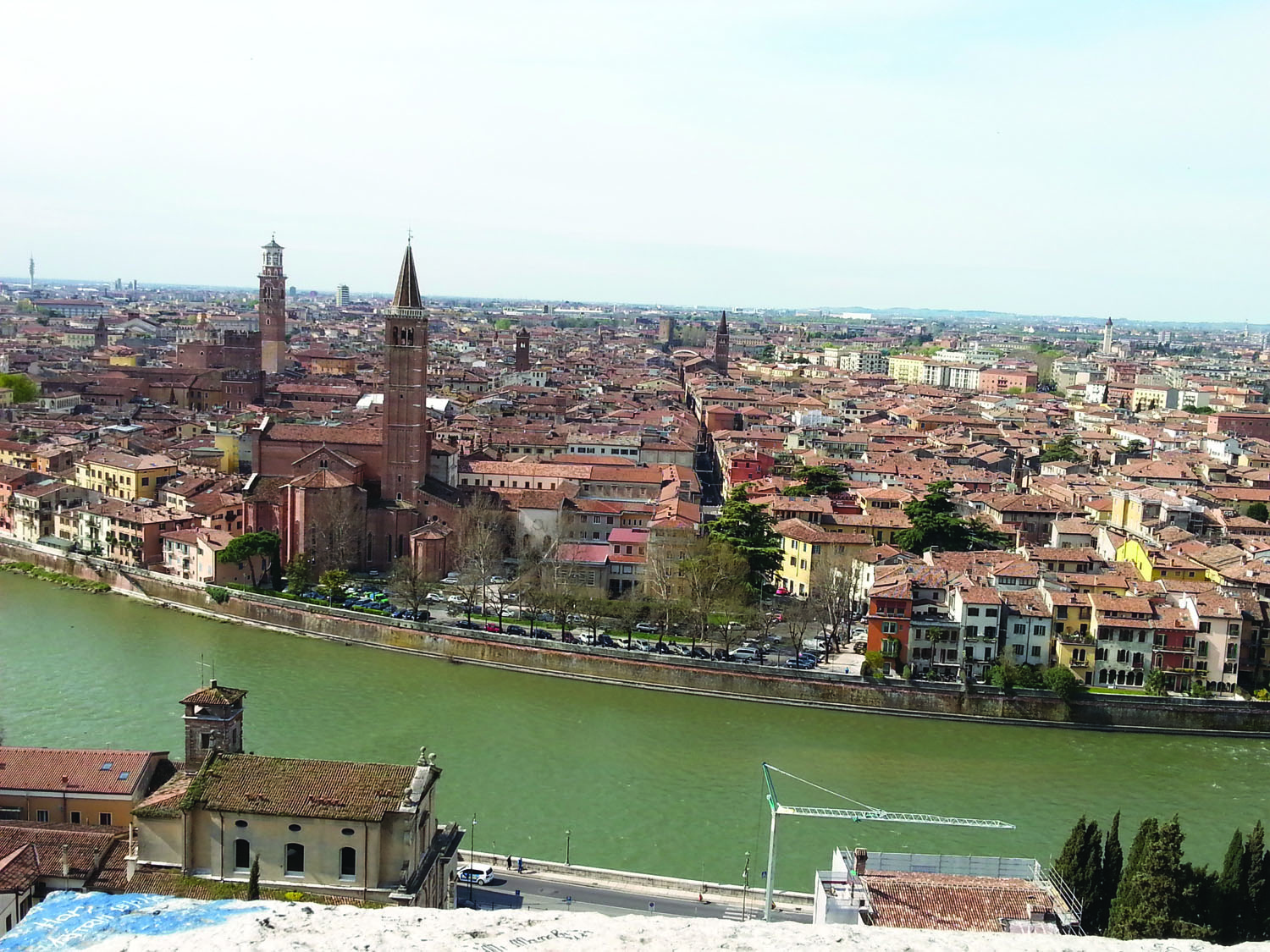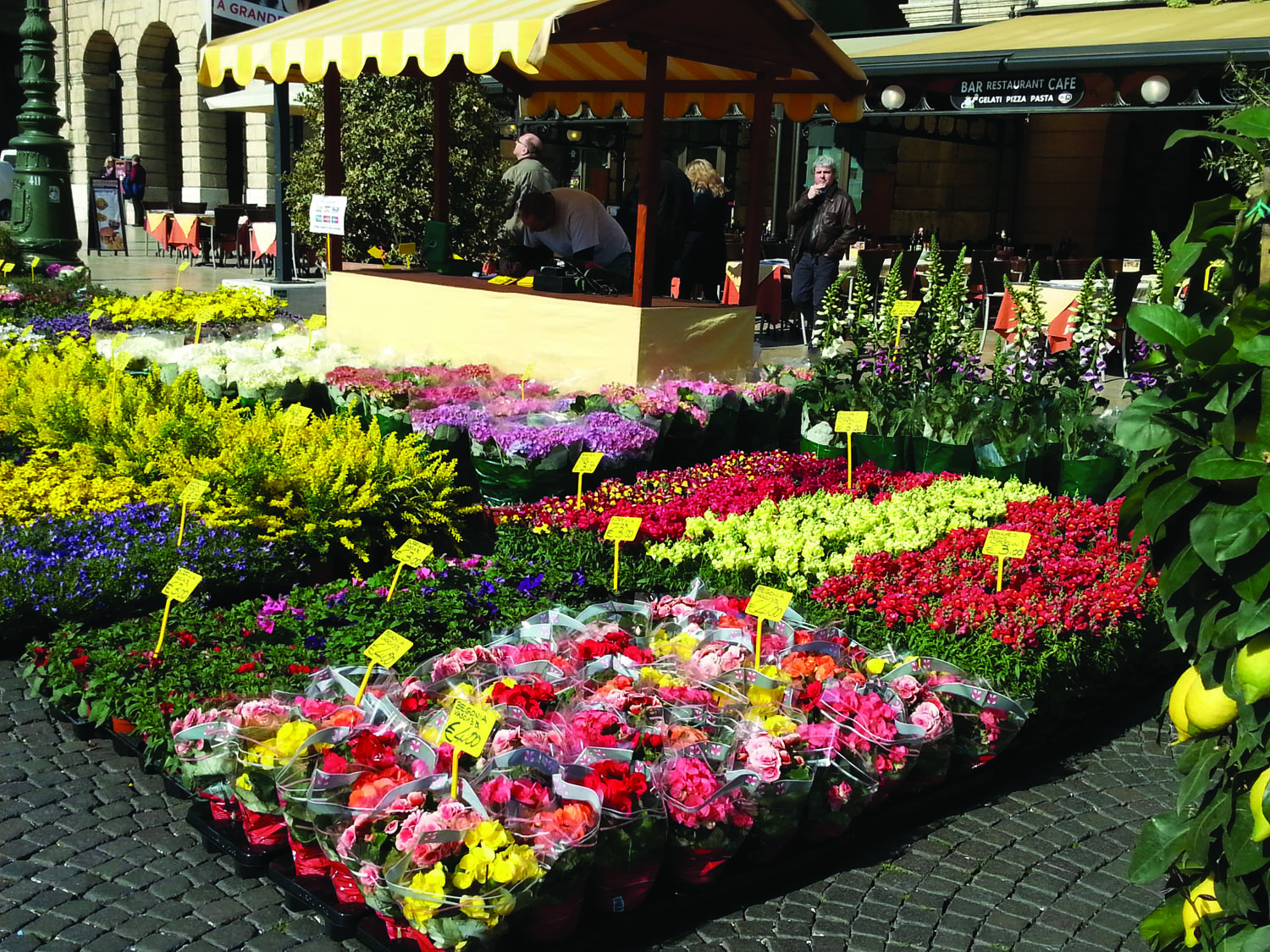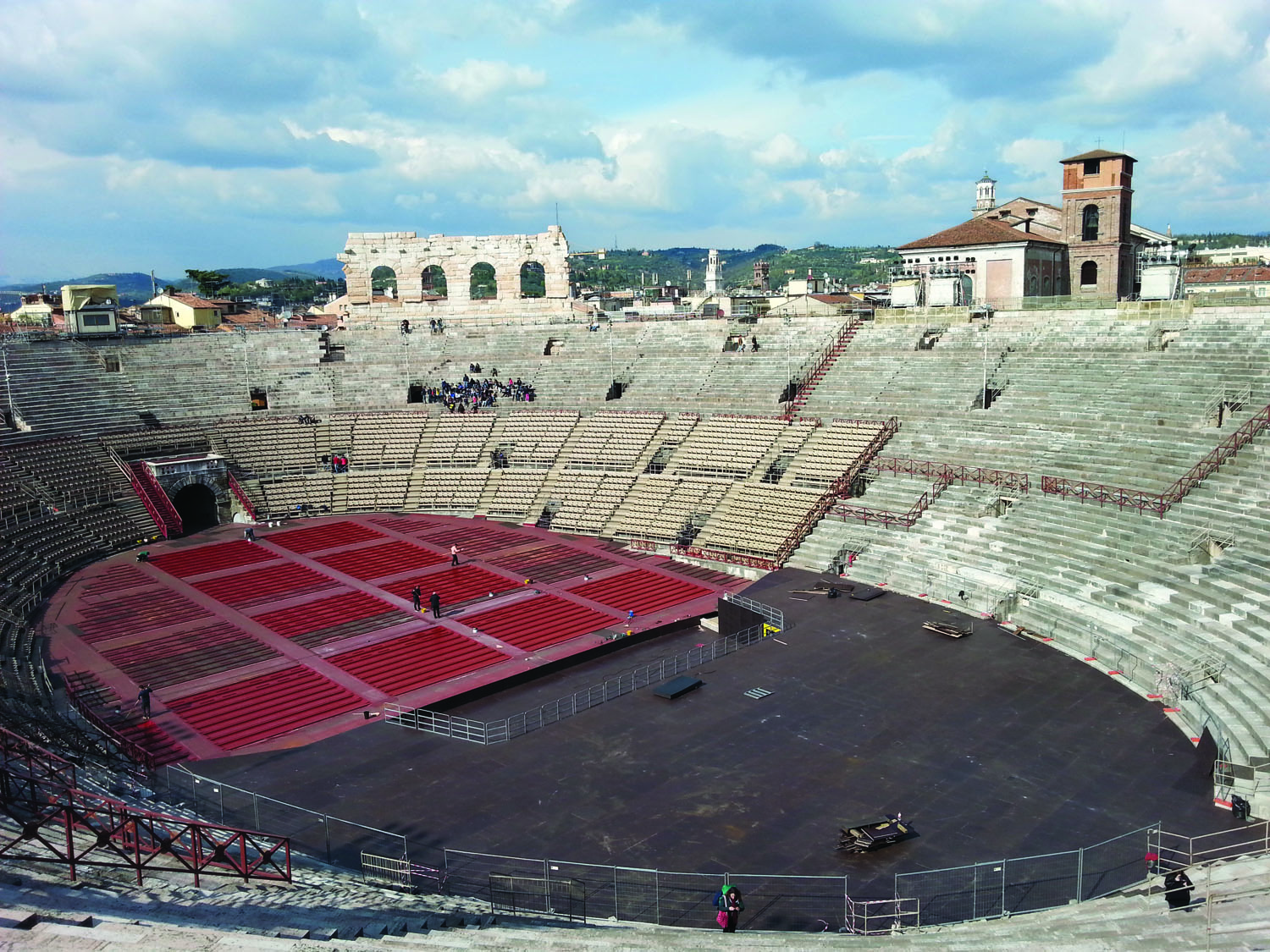With preserved architecture spanning all the ages from ancient times through the medieval and Renaissance periods, Verona is the perfect city for sightseeing. Lorenza Bacino reports…
I don’t want it to end. My last morning in Verona is spent enjoying the view from a café in Piazza Bra’ overlooking the Arena and savouring the traditional spritz aperol I’ve come to know and love on this trip. The aperitif is as bright and as orange as the sunshine and, despite its innocent appearance, it’s conspiring with the sun to make me woozy.
The spacious Piazza Bra’ is humming with people enjoying the colourful flower stalls on this perfect spring morning, and food stalls proffering delicacies from around Italy produce inviting aromas. There’s a gentle drone of cars in the distance as I sink into a reverie and revisit my mini-break in this pretty medieval town in the southwest of the Veneto region.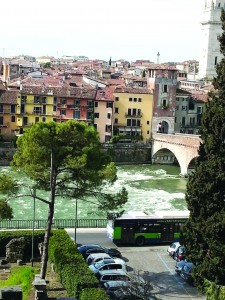
Verona is probably best known for Shakespeare’s play Romeo and Juliet, and indeed the courtyard where Juliet’s balcony was supposed to have been draws an endless stream of visitors, many of them teenagers on school trips, eager to add their message of love on the already overly-scribbled wall.
Star-struck lovers aside, Juliet’s house and balcony are worth a fleeting visit before exploring the historic centre, which is compact and easily walkable.
The beautiful Piazza Erbe with its surrounding medieval and Renaissance architecture is just nearby, and if you cast your eye upwards you can enjoy the stunning frescoes adorning the façades.
I feel as if I’m in a bit of a tourist trap in Piazza Erbe because of the proximity to the ‘balcony’ and the tacky tourist stalls, so I head for the nearby Torre dei Lamberti, which offers a great view of the city.
All I can hear is my own breath as I climb the 368 steps to the top of the belfry tower. As the first visitor of the day, I’m completely alone during my ascent. Hitchcock’s Vertigo springs to my mind. The bell tower is 84 metres high and I can only hope James Stewart will be on hand to catch me should I fall!
Adjacent to Piazza Erbe is Piazza dei Signori. It’s a small, charming square and the equally charming Nicola is on hand at the Impero pizzeria with the best prosciutto in town. It’s light, fluffy and full of flavour and I close my eyes to savour my ‘prosciutto moment’. Juxtaposed with chunks of tasty Parmesan it makes a perfect snack to keep you going (with a spritz aperol of course!)
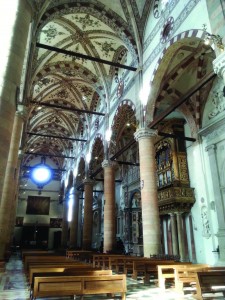 From Piazza dei Signori, I take Corso Anastasia, which leads to the church of Santa Anastasia. Begun in 1290, it’s a great example of Italian gothic architecture and the biggest church in Verona, with high vaulted ceilings and an array of gorgeous chapels all around.
From Piazza dei Signori, I take Corso Anastasia, which leads to the church of Santa Anastasia. Begun in 1290, it’s a great example of Italian gothic architecture and the biggest church in Verona, with high vaulted ceilings and an array of gorgeous chapels all around.
From here I wander along the Adige River to the Ponte Pietra. The bridge offers a lovely view of the historic side of town on one side, and the ruins of the Roman theatre and the Castel San Pietro on the other. The greenery across the river is calling me and I head for some cobbled steps leading upwards. I’m not sure where they go as I cannot see any signs but I decide to follow them nonetheless.
Charming terracotta-coloured villas and gardens line the steps and the quiet cobbled streets. There is only birdsong in my ears. As I continue my climb I reach some deserted but well-kept gardens and enjoy a view of the city and the distinctive curve of the Adige river. Aside from half a dozen belfries, there are no tall buildings spoiling the view. The skyline appears essentially as it must have been in medieval times, the buildings mainly in warm pink and yellow hues.
If you want to escape the hordes, then this is the spot for you. The Roman theatre just below dates from the 1st century BC, but the ruins were only unearthed in 1851 as foundations for the Castel San Pietro were being dug. You can’t go into the Castle itself, but there’s a panoramic terrace which is a great opportunity for a photograph.
Heading downwards back towards the river, I reach an unassuming portone – but inside my eyes are greeted by the stunning Renaissance Giardino Giusti. Only a handful of people are wandering along the cypress-lined avenues, talking in hushed tones to each other as though afraid of disturbing the surrounding tranquillity of this most beautiful of gardens. They are a perfect
ensemble of nature, art and history dating from the end of the 15th century. They were designed by Agostino Giusti, Knight of the Venetian Republic, as a backdrop for the Giusti Palace and are terraced, so you gradually uncover the view over the city. They are also home to one of the oldest labyrinths in Europe, a beautiful collection of flowers, Roman ruins, grottoes and mythological statues. There’s a fantastic belvedere suitably adorned with a mascherone, the grotesque mask of a monster which, legend has it, emits tongues of fire from its mouth.
Reluctantly I leave this most tranquil of spots and head back into town across the Ponte Nuovo.
Verona is a UNESCO World Heritage Site and most of the palazzi and houses have cellars built on Roman ruins, some of which are open to the public, and many of which remain hidden. I drop by the Ristorante Maffei at one end of the Piazza Erbe as I’ve been reliably informed that it has a cellar and dining area in the ancient ruins. Luca Gambaretto, the manager, is only too pleased to guide me down to the cellar and explains that it houses an impressive 7,000 bottles of wine with over 600 labels ranging from local wines to examples from South America and Australia. He shows me the secluded ‘Romeo and Juliet’ table, standing alone among the ruins of the Campidoglio, and which is set aside for very special occasions. He’ll even assign an extra waiter when the table is booked.
Back into the sunshine and towards the ‘balcony’ end of Piazza Erbe, via Mazzini leads down towards the Arena, and is the main shopping area. It’s nice to glide along the smooth marble slabs of the pavement, stopping every now and then at an appealing shop window, or to buy an ice cream along the way.
My visit couldn’t be complete without entering the famous Arena. Preparations are clearly underway inside with structures going up as the opera season begins in June and goes through till September. I get a little lost in the dank corridors which I find a tad spooky. How many secrets must they hold?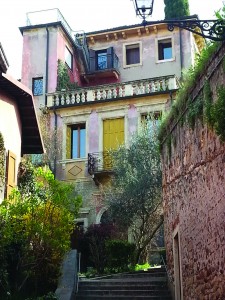
For the gladiators the corridors must have meant safety, and the sunlight of the arena must have signalled death. For me the opposite is true and I make a bid for the sunlight as soon as I can, and sit on the steps soaking up the atmosphere of the auditorium. A school group claps to test out the acoustics and a lovely twinkling sound ripples all around. This summer’s programme includes some of the most popular operas of all time – Carmen, Aida, Carmina Burana, and of course, Romeo and Juliet.
I am lucky enough to be staying at the Sogno di Giulietta – Juliet’s Dream – boutique hotel, right in the courtyard of Juliet’s house. My room even overlooks the eponymous balcony. In the evenings the gates are closed to the public, and I can enjoy a contemplative moment alone in the company of Juliet’s statue, and in the peace and quiet of a perfect spring Verona evening.
Planning a trip to Verona? Click here for top tips on what not to miss!

